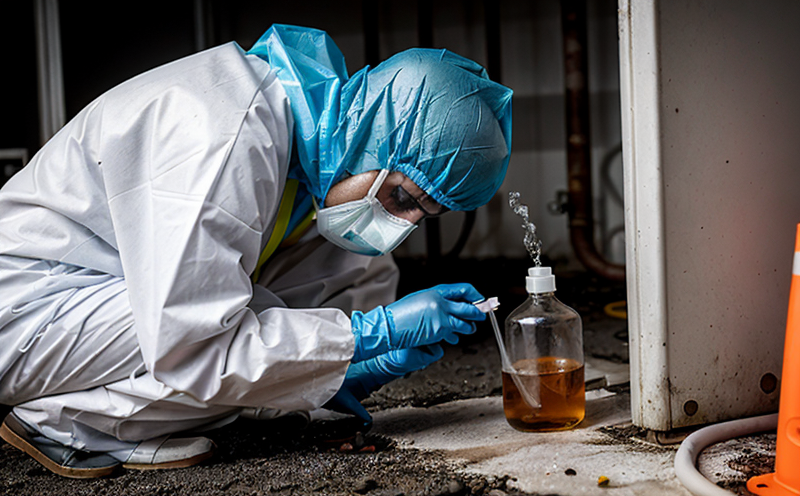ISO 11885 Determination of Trace Elements by ICP-OES
The ISO 11885 standard provides a robust method to determine trace elements in additive manufacturing materials, ensuring the quality and reliability of products used in sectors such as aerospace, automotive, and medical devices. This testing service employs Inductively Coupled Plasma Optical Emission Spectrometry (ICP-OES) for accurate quantification of trace elements down to parts per million (ppm).
The process begins with precise sample preparation, where raw materials or finished components are ground into a fine powder and homogenized. This step is critical as it ensures uniform distribution of the sample across the analytical area, reducing measurement variability. Once prepared, the samples undergo digestion using strong acids to dissolve the matrix and release trace elements for analysis.
ICP-OES operates by introducing a solution containing the sample into an inductively coupled plasma source where ions are excited to emit characteristic optical emissions. These emissions are detected by a spectrometer and quantified against calibration standards. This method allows for simultaneous detection of multiple trace elements, providing comprehensive data on elemental composition.
The ISO 11885 protocol specifies the use of specific wavelengths corresponding to each element being analyzed. The selection of these wavelengths is crucial as it ensures accurate measurement without interference from other spectral lines. Calibration standards are prepared using certified reference materials (CRMs) that provide known concentrations of target elements. This ensures traceability and accuracy in measurements.
The precision of ICP-OES allows for the detection of elements at very low concentrations, which is essential for additive manufacturing where even small variations in elemental composition can affect material properties. The service provider adheres strictly to ISO 11885 guidelines to ensure consistent and reliable results. This includes using state-of-the-art instrumentation from reputable manufacturers such as Thermo Fisher Scientific or PerkinElmer.
Quality assurance is paramount in this testing process, ensuring that the results meet the stringent requirements of international standards. The laboratory employs rigorous quality control measures, including regular calibration checks, inter-laboratory comparisons, and proficiency testing programs to maintain high standards.
The use of ICP-OES for trace element analysis in additive manufacturing materials is not only limited to detecting impurities but also plays a critical role in process optimization. By identifying the exact composition of raw materials, manufacturers can fine-tune their processes to achieve desired material properties. This service supports R&D efforts by providing detailed elemental data that helps in developing new materials and improving existing ones.
For quality managers and compliance officers, this testing ensures adherence to regulatory requirements, thereby protecting brand reputation and meeting customer expectations. In the medical device sector, for instance, accurate trace element analysis is crucial for ensuring biocompatibility and safety of implants and prosthetics. Similarly, in aerospace applications, precise elemental composition can enhance the durability and performance of components.
The service provider also assists procurement teams by providing detailed reports that include elemental data, potential sources of contamination, and recommendations for process improvements. This comprehensive approach ensures that additive manufacturing products meet the highest quality standards and are fit for their intended use.
Industry Applications
| Industry Sector | Application |
|---|---|
| Aerospace | Ensuring the integrity of engine components and fuel systems |
| Automotive | Quality control in exhaust system parts and alloyed metals |
| Medical Devices | Biocompatibility testing for implants and prosthetics |
| Electronics | Material quality assurance in semiconductor manufacturing|
| Metallurgy | Elemental analysis of raw materials and finished products |
| Consumer Goods | Verification of compliance with trace element limits for safety
| Sample Type | Preparation Method |
|---|---|
| Powder samples | Mixing and homogenization followed by digestion with strong acids |
| Liquid samples | Dilution to appropriate concentration range for analysis |
| Solid samples | Grinding into fine powder, then digestion with strong acids |
| Hybrid samples | Mixing and homogenization followed by precise dilution |
Quality and Reliability Assurance
The ISO 11885 Determination of Trace Elements by ICP-OES service is underpinned by a comprehensive quality management system. This ensures that all tests are conducted in accordance with international standards, providing reliable and accurate results.
Rigorous calibration procedures are followed to maintain the accuracy and precision of the instrument. The laboratory uses internationally recognized reference materials (such as NIST or CRM) for this purpose. Inter-laboratory comparisons and proficiency testing programs further reinforce the reliability of the service. These activities help in identifying any potential issues early on, ensuring continuous improvement.
Data reporting is a critical aspect of the service. Detailed reports are generated that include elemental compositions, detection limits, precision statistics, and any observed trends or anomalies. This information is invaluable for process control and optimization efforts within manufacturing facilities.
The laboratory also offers additional services such as statistical analysis of data sets and interpretation of results in the context of specific industry standards. This support helps clients to make informed decisions based on robust scientific evidence.
Environmental and Sustainability Contributions
The ISO 11885 Determination of Trace Elements by ICP-OES service plays a vital role in promoting environmental sustainability within the manufacturing sector. By ensuring that raw materials are free from harmful contaminants, this testing helps to reduce the ecological footprint associated with production processes.
Through accurate trace element analysis, manufacturers can optimize their supply chain practices, reducing waste and minimizing resource consumption. This aligns with broader sustainability goals aimed at improving efficiency and reducing environmental impact.
The laboratory also supports sustainable development initiatives by providing data that aids in the design of more environmentally friendly products. By ensuring compliance with relevant regulations, this service contributes to a cleaner and safer environment for all stakeholders.





